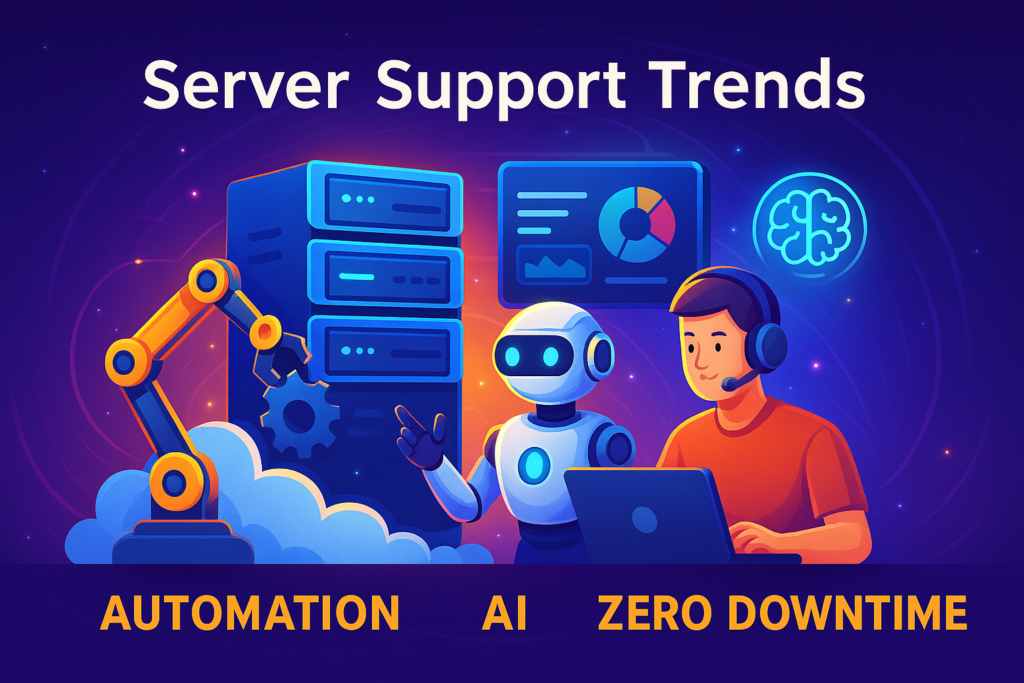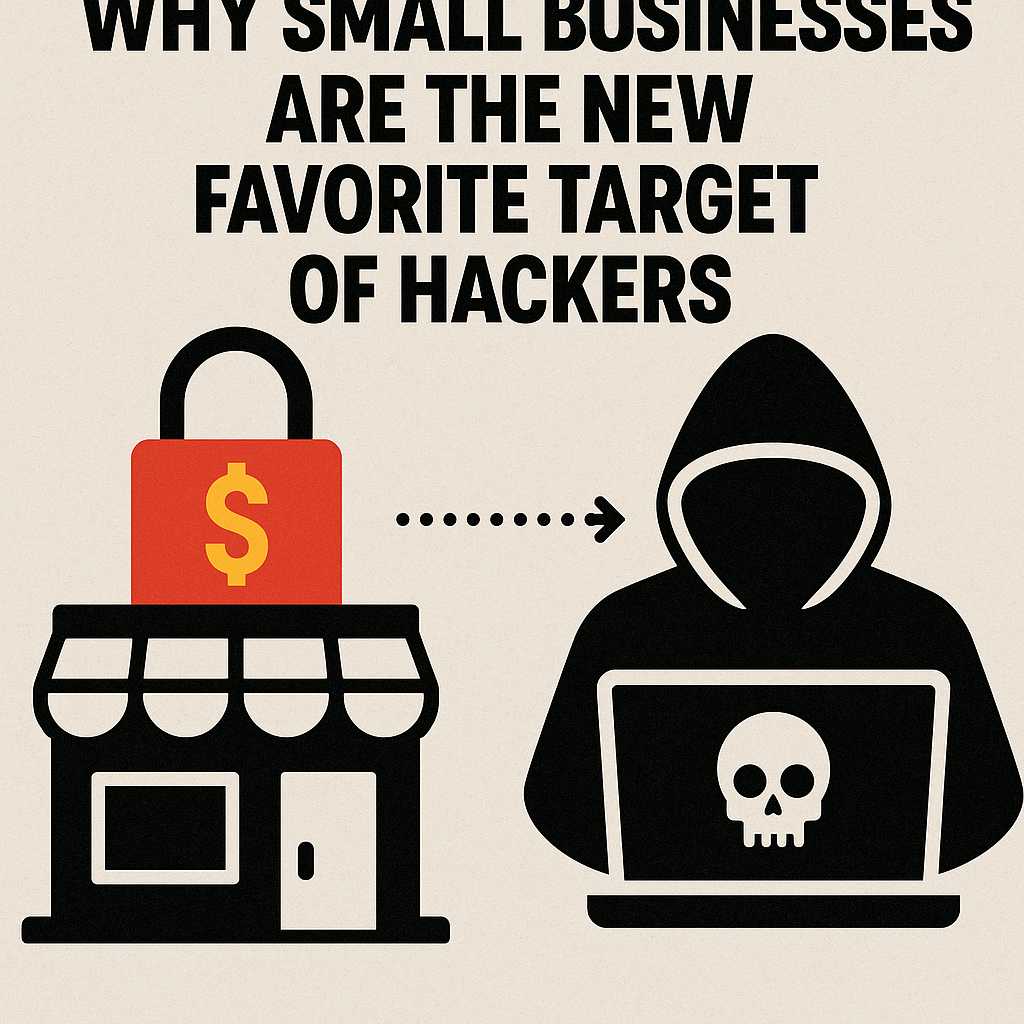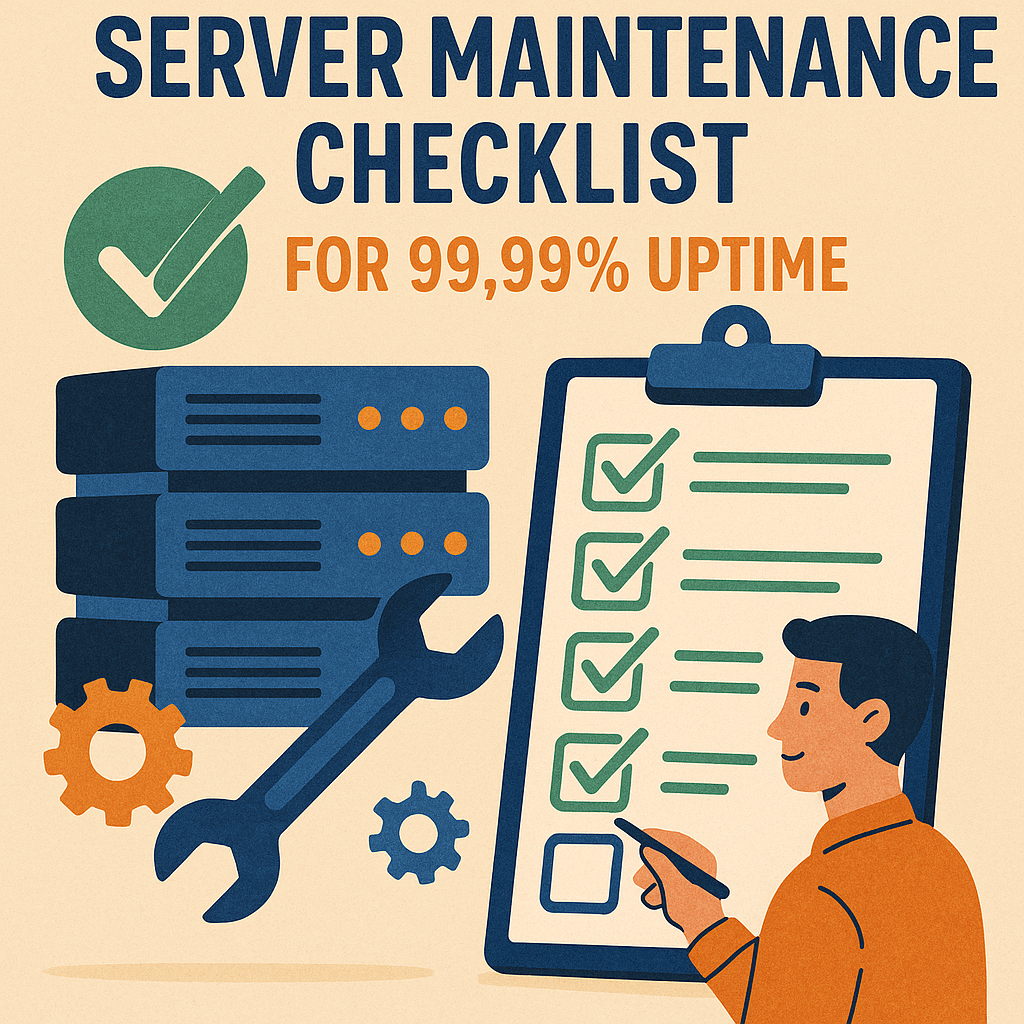2025 Server Support Trends: Automation, AI & Zero Downtime
Introduction to Evolving Server Support
The year 2025 marks a revolutionary phase in professional server support. Businesses now depend on servers not just for operations, but for innovation and customer satisfaction. As expectations increase, traditional methods are giving way to automated, intelligent, and outsourced server support models.
With the rising cost of downtime and an explosion in data processing, IT teams must manage infrastructure more efficiently, proactively addressing every potential server problem before it affects users.
The Role of Automation in Server Management
Automation plays a central role in ensuring professional server support meets enterprise-grade expectations. Repetitive tasks like OS updates, patch deployments, and log audits are handled by sophisticated scripts and workflows.
Tools used in IT support for automation include:
- Ansible and Chef for configuration management
- Terraform for infrastructure provisioning
- Jenkins for continuous deployment pipelines
This shift minimizes human error and allows rapid recovery from any server problem, ensuring smoother, uninterrupted service delivery.
How AI is Reshaping Server Support
AI transforms outsourced server support by providing capabilities like predictive analysis, behavioral modeling, and real-time diagnostics. These features help prevent server problems and optimize system performance.
AI platforms automatically trigger remediation protocols or escalate incidents to human experts if anomalies persist. The result? A smarter, faster, and more adaptive support system that aligns with modern business needs.
Zero Downtime Architecture Explained
Professional server support now includes architectural planning to achieve zero downtime. Whether hosting websites, applications, or critical databases, the ability to stay online at all times is a game-changer.
Load balancers, containerized deployments, and hybrid cloud setups help IT teams minimize interruptions. Even during updates, systems continue operating, offering users a seamless experience.
Edge Computing and Its Impact on Server Support
The fusion of edge computing and professional server support improves performance and reduces latency. Organizations resolve server problems faster by pushing analytics and decision-making closer to end users.
This decentralization also enables outsourced server support providers to manage local environments without needing full physical access to on-prem infrastructure.
Serverless and Cloud-Native Infrastructure Trends
2025 is seeing a full-blown shift toward serverless architectures, managed by both internal IT teams and outsourced server support vendors. These setups reduce reliance on physical servers, instead using cloud-native platforms like:
- AWS Lambda
- Azure Functions
- Google Cloud Run
These tools, along with container orchestration systems like Kubernetes, make it easier to deploy services with built-in resilience.
Proactive Monitoring and Real-Time Alerts
A fundamental pillar of professional server support is continuous monitoring. Businesses use tools in IT support like:
- Nagios and Zabbix for uptime tracking
- New Relic for performance metrics
- PagerDuty for intelligent alert escalation
This tech stack ensures that even minor server problems are flagged and resolved before causing any user-facing impact.
Self-Healing Infrastructure in 2025
The next evolution in professional server support includes self-healing systems. For instance, a failed disk might automatically prompt a RAID rebuild, or a failing node could redirect traffic elsewhere without human intervention.
Such capabilities make outsourced server support more scalable, efficient, and affordable for businesses aiming to run 24/7 services.
Cybersecurity Integration in Server Support
Security is no longer a separate domain. It’s embedded within every layer of server infrastructure. AI and automation help detect threats, isolate anomalies, and protect against breaches — all key to delivering professional server support that clients can trust.
Tools used in IT support for cybersecurity include:
- CrowdStrike for endpoint protection
- Splunk for security event analysis
- Fortinet for firewall automation
Role of DevOps and SRE in Uptime Management
DevOps and SRE practices ensure professional server support teams are proactive and reactive. These disciplines work alongside outsourced server support to maintain uptime, resolve server problems, and drive infrastructure improvements.
DevOps uses CI/CD pipelines, automated testing, and version-controlled deployments to keep systems updated and available at all times.
Predictive Maintenance Using AI and ML
AI and ML are changing the way organizations manage maintenance. By analyzing logs, temperature data, and historical performance, these technologies predict server problems before they escalate.
This predictive approach is commonly used in outsourced server support environments to offer value-added services without increasing overhead.
Remote Server Management Tools & Techniques
With the global workforce distributed, remote management is vital. Tools used in IT support include:
- Remote Desktop Manager
- SolarWinds Remote Monitoring & Management (RMM)
- ConnectWise Control
These tools enable professional server support teams to manage infrastructure securely from anywhere in the world, without compromising response times.
Green IT and Sustainable Server Support
Eco-conscious organizations now expect outsourced server support partners to provide green solutions. This includes using AI to manage power loads, automating shutdowns for idle resources, and investing in renewable-powered data centers.
Sustainable practices are becoming a competitive advantage in 2025.
Training IT Teams for AI-Driven Server Support
Companies must invest in continuous training to keep their teams prepared for AI-enhanced tools. Key focus areas include:
- Mastering automation platforms
- Using AI for system diagnostics
- Understanding root-cause analysis for server problems
As AI takes over routine tasks, teams must evolve to manage exceptions and strategic implementations.
Regulatory Compliance and Data Sovereignty
Automation ensures that professional server support remains compliant with global standards. This includes automated audits, encryption policies, and localized hosting options based on jurisdiction.
Outsourced server support providers also rely on these tools to ensure they stay compliant across multiple client regions.
Future Outlook: What’s Next Beyond 2025
Looking ahead, support systems may become fully autonomous. AI agents will handle routine support tickets, fix server problems, and optimize environments in real time.
Expect to see deeper integration of digital twins, quantum-enhanced servers, and decentralized infrastructure support led by blockchain systems.
FAQs: 2025 Server Support Trends
1. What is professional server support?
It refers to expert-level infrastructure maintenance and optimization offered by internal teams or third-party providers, ensuring system availability and performance.
2. How do outsourced server support services work?
They handle server management remotely, using advanced tools and automation to ensure uptime, patch updates, and system health.
3. What tools are used in IT support today?
Common tools include Ansible, Zabbix, SolarWinds, ConnectWise, and CrowdStrike, all of which help automate, monitor, and secure servers.
4. How can automation reduce server problems?
Automation eliminates manual errors, ensures consistent configurations, and allows faster responses to incidents through scripted actions.
5. Is zero downtime really achievable?
Yes, with the right architecture, including load balancers, multi-region deployment, and containerized services, near-zero downtime is achievable.
6. Why is AI critical in modern server support?
AI enables predictive maintenance, smart resource allocation, and real-time anomaly detection—key to proactive infrastructure management.
Conclusion
From automation to AI, and from self-healing systems to green IT, 2025 server support trends represent a complete transformation in how infrastructure is managed. By adopting professional server support practices and leveraging advanced tools used in IT support, companies can resolve every server problem proactively and deliver continuous service—often with the help of strategic outsourced server support partners.





No comment